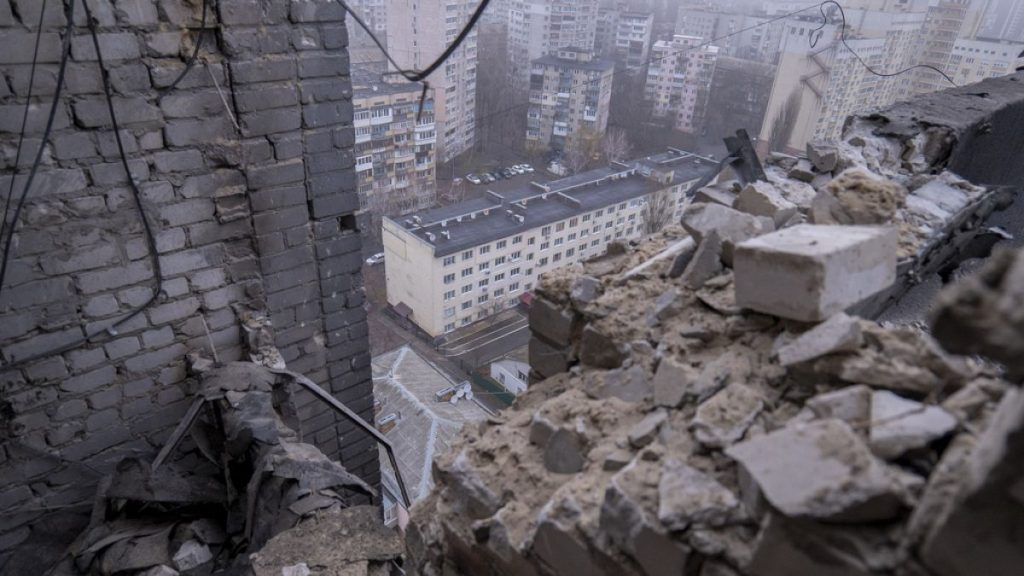The pre-dawn hours of Saturday witnessed an escalation in the ongoing conflict between Russia and Ukraine, marked by a reciprocal exchange of drone strikes. In the Ukrainian city of Zaporizhzhia, two individuals sustained injuries as Russian drones targeted residential areas, damaging twenty houses and igniting three separate fires. The attacks also resulted in damage to a trade kiosk and a low-pressure gas pipe, further disrupting the lives of civilians already grappling with the realities of war. Eyewitness accounts paint a vivid picture of the sudden and terrifying nature of the attack, with residents describing the shock and fear that gripped them as explosions rocked their neighborhood. The incident underscores the vulnerability of civilian populations caught in the crossfire of this protracted conflict.
Concurrent with the attacks on Zaporizhzhia, Ukraine’s military reported a broader Russian drone offensive targeting multiple regions across the country. A total of 74 drones were launched toward Poltava, Sumy, Kharkiv, Cherkasy, Chernihiv, Kyiv, Dnipropetrovsk, Zaporizhzhia, Kirovohrad, Kherson, and Mykolaiv. Ukrainian air defenses managed to neutralize 47 of these unmanned aerial vehicles, while the remaining 27 disappeared from radar tracking, raising concerns about their potential impact. This widespread drone campaign highlights Russia’s continued reliance on aerial warfare tactics and its willingness to strike targets across a wide geographical area.
The retaliatory response from Ukraine came swiftly, as a drone strike targeted the Tambov region in Russia, injuring at least seven people. The attack focused on the town of Kotovsk, where two five-story apartment buildings sustained damage, with windows shattered and balconies compromised. Videos circulating on social media platforms depicted the aftermath of the strike, showcasing the extent of the destruction and the disruption caused to the local community. This attack deepens the conflict’s reach into Russian territory, demonstrating Ukraine’s growing capacity to project force beyond its borders.
This latest exchange of drone strikes represents another chapter in the ongoing conflict between Russia and Ukraine, a conflict that has tragically claimed tens of thousands of lives since Russia’s full-scale invasion in February 2022. The conflict has become the largest armed conflict in Europe since World War II, causing immense human suffering and widespread destruction. The use of drones by both sides underscores the increasingly technological nature of modern warfare and the potential for such technology to exacerbate the conflict’s impact on civilian populations.
The attacks on civilian infrastructure in both countries highlight the indiscriminate nature of this conflict, where civilians are often caught in the crossfire. The targeting of residential areas in Zaporizhzhia and the damage to apartment buildings in Kotovsk demonstrate the human cost of this ongoing war, with families displaced, homes destroyed, and lives irrevocably altered. These incidents serve as a stark reminder of the urgent need for a peaceful resolution to the conflict, a resolution that prioritizes the safety and well-being of all those affected.
As the conflict drags on, the international community faces the challenge of finding a path towards de-escalation and a sustainable peace. The increasing use of drone technology raises concerns about the potential for further escalation and the blurring of lines between military and civilian targets. The events of Saturday morning serve as a sobering reminder of the fragility of peace and the devastating consequences of continued conflict. The international community must redouble its efforts to find a diplomatic solution that brings an end to the violence and allows for the rebuilding of lives and communities shattered by war.

